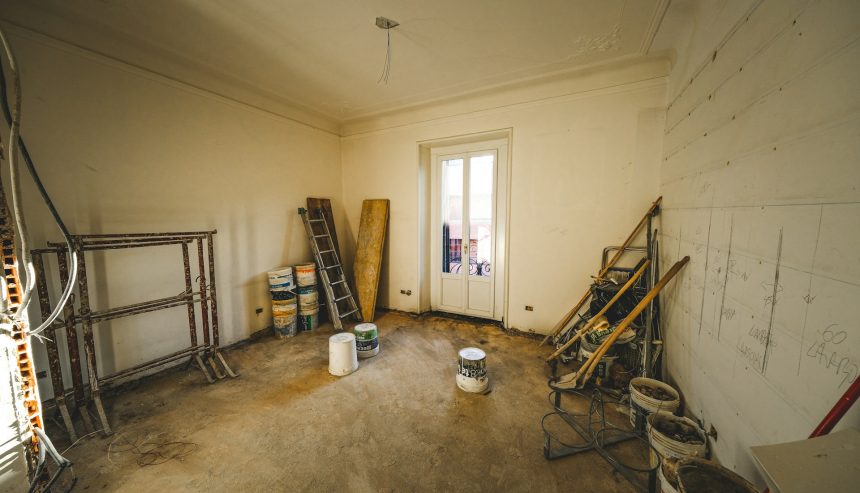Keeping your basement dry in Michigan is a year-round challenge. Our state experiences a wide range of weather, from heavy snow in winter to rainy springs and humid summers. Basements are especially prone to moisture problems, which can lead to mold, structural damage, and a host of other issues. But don’t worry, there are several things you can do to keep your basement dry and healthy.
One of the first steps is to closely inspect and repair your foundation. Cracks and leaks can let water seep in, so it’s crucial to seal and waterproof these areas. Improving your home’s drainage system is another key component. Properly installed and maintained gutters, downspouts, and French drains can effectively direct water away from your home.
Using dehumidifiers and ensuring good ventilation are also essential in combatting moisture. They help manage the humidity levels in your basement, making it easier to keep the space dry. Regular maintenance goes a long way. By conducting routine inspections and promptly addressing any issues, you can prevent small problems from turning into big headaches.
Inspecting and Repairing Your Foundation
Checking for Cracks and Leaks
The first step to keeping your Michigan basement dry is to inspect your foundation for any cracks or leaks. Walk around the exterior and interior of your home, paying close attention to the foundation walls and floors. Look for visible cracks or any areas where water might be seeping in. Don’t forget to check basement windows, window wells, and doors, as these are common entry points for moisture. Use a flashlight to see more clearly in dim areas and take notes of any problem spots you find.
Sealing and Waterproofing
Once you’ve identified cracks and leaks, it’s time to seal and waterproof them. Begin by cleaning the affected areas thoroughly to remove any dirt or debris. For small cracks, use epoxy or other specialized crack sealants available at hardware stores. Larger or more serious cracks might require professional repair. Applying a waterproof coating to your foundation walls and floors can also provide extra protection. These coatings create a barrier that helps keep water out. Remember to follow the directions on the products you use and apply them in dry weather for the best results.
Improving Drainage Systems
Installing a French Drain
Improving your home’s drainage system is crucial to keeping your basement dry. One effective solution is installing a French drain. A French drain involves digging a trench around the perimeter of your home, placing a perforated pipe in the trench, and covering it with gravel. This system helps divert water away from your foundation and reduces the risk of basement flooding. While you can install a French drain yourself, hiring a professional ensures it’s done correctly and efficiently.
Maintaining Downspouts and Gutters
Proper maintenance of downspouts and gutters is essential for directing water away from your home. Clean your gutters regularly to remove leaves, twigs, and other debris that can block water flow. Ensure your downspouts are securely attached and extend at least six feet away from your foundation. You can use downspout extenders or splash blocks to help channel water further away from your home. Regularly check for any leaks or damage in your gutters and downspouts, and repair them promptly to prevent water from pooling around your foundation. Keeping these systems in good shape plays a huge role in protecting your basement from excess moisture.
Using Dehumidifiers and Ventilation
Choosing the Right Dehumidifier
Using a dehumidifier is a great way to control the moisture levels in your basement. Choosing the right dehumidifier depends on the size of your basement and the amount of moisture present. Look for one with a capacity that suits your space; larger basements may need a dehumidifier with a higher pint capacity. It’s also important to consider energy efficiency, noise levels, and features like auto shut-off and continuous drainage. Place your dehumidifier in an open area to allow for maximum air circulation and check the device regularly to empty its water collection tank or adjust its settings.
Proper Ventilation Strategies
Proper ventilation helps keep your basement dry by reducing humidity levels. Start by ensuring that your basement has adequate airflow. Install vent fans or exhaust fans designed for basements. These fans can draw moist air out and bring fresh air in. You can also use window vents if your basement has windows. For homes with forced-air heating and cooling systems, consider extending the HVAC ducts to the basement. Keeping doors to the basement open can also improve ventilation. Regularly assess and tweak your ventilation strategies to keep your basement fresh and dry.
Regular Basement Maintenance
Routine Inspections
Regular inspections can catch potential water problems before they become major issues. Make it a habit to inspect your basement every few months. Look for signs of moisture, such as water stains, mold, or musty odors. Check the foundation walls and floors for any new cracks. Ensure that your drainage and waterproofing systems are functioning correctly. Additionally, inspect your dehumidifier and ventilation systems to make sure they’re working as needed. Keeping a routine schedule helps maintain a dry and safe basement environment.
Addressing Problems Immediately
If you spot any issues during your routine inspections, it’s crucial to address them immediately. Even small water leaks or signs of moisture can quickly escalate into bigger problems like mold growth or structural damage. Repair any cracks or leaks as soon as possible. Clean up any water spills and dry out damp areas promptly. If a repair is beyond your skill level, don’t hesitate to call in a professional. Tackling problems as they arise can save you from costly repairs and keep your basement dry.
Conclusion
Keeping your Michigan basement dry is a proactive and continuous effort. By inspecting and repairing your foundation, improving drainage systems, using dehumidifiers and proper ventilation, and maintaining regular inspections, you can effectively manage moisture levels in your basement. These steps help prevent common issues like mold growth, structural damage, and unpleasant odors, ensuring a healthier living environment for your family.
Remember, a dry basement is essential for the overall health of your home. If you ever need professional assistance, don’t hesitate to reach out. Proper maintenance and quick responses to potential issues can save money and stress in the long run.
For expert help with residential water damage restoration, contact PuroClean of Howell. Our team is ready to assist you in keeping your basement and home in top condition.




 PuroClean of Howell
PuroClean of Howell